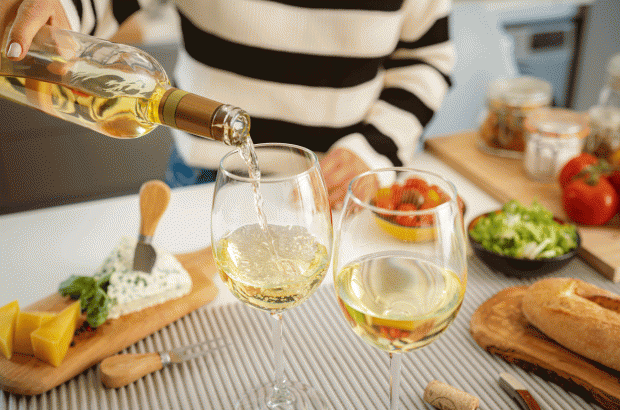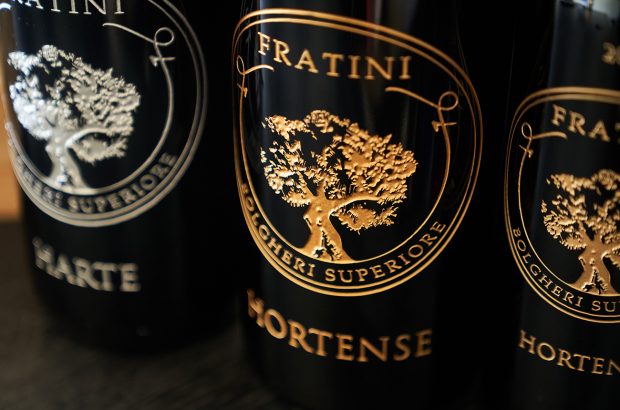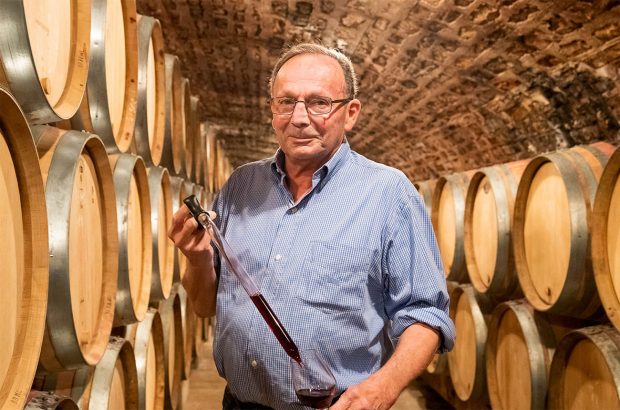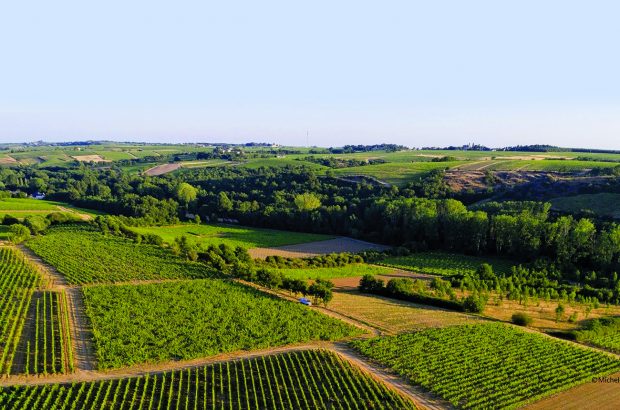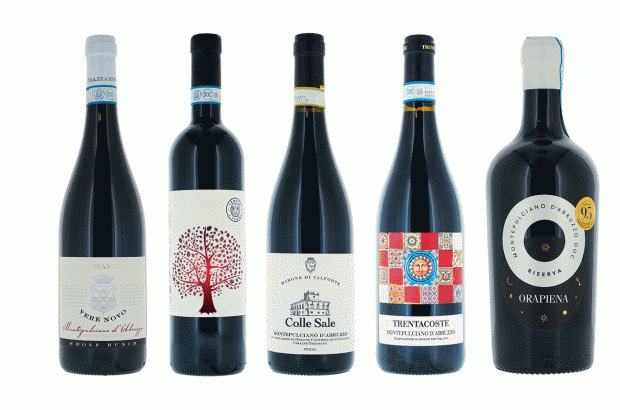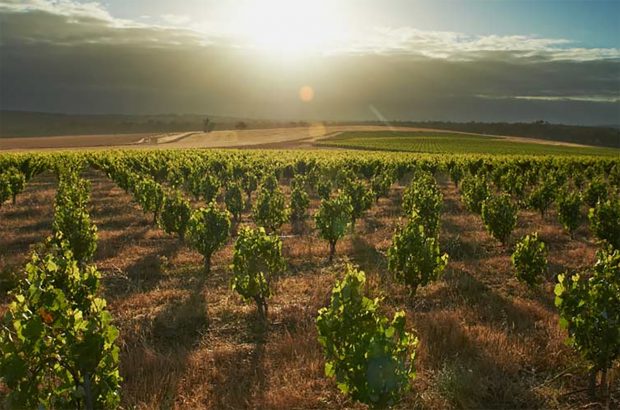- Cheap, commercial Vinho Verde doesn’t age at all well and doesn’t carry a consumer-friendly sell-by date.
- ‘Now the most basic cheap wines suffer from different flaws: the worst are too sweet, artificially over-fizzy and sulphurous.’
- ‘If Vinho Verde sounds like a hotchpotch of wines with confusingly varied characters, then I’m describing the region correctly.’
- ‘It’s almost impossible to find a uniform style.’
Like many people who have travelled to Portugal for their holidays, I have happy memories of Vinho Verde. I remember drinking cold, white, lightly spritzy wine in situ, wine fragrant with crisp apples and lemons, a deeply refreshing draught and perfect for washing down a plate of oily sardines.
Why, then, does Vinho Verde rarely seem quite the same in the UK? The quality varies enormously from bottle to bottle – one minute oxidised, yellow and over-sweet, the next sharp, acidic and desperately thin on fruit. It’s partly because cheap, commercial Vinho Verde doesn’t age at all well and doesn’t carry a consumer-friendly sell-by date. In short, this is a wine – like that other great holiday quaffer, rosé – which has a delicate constitution. ‘The grapes we use are sensitive,’ admits Vigario Messias, owner of the eponymous winery which makes Dão, Douro, Bairrada and Vinho Verde. ‘The wine doesn’t always travel well. Another problem is that it changes so much from vintage to vintage.’
Ah yes, the weather. Vinho Verde, a large region in the far north of Portugal, suffers from a deeply variable climate. It always rains harder than anywhere else in Portugal (around 1800mm a year, compared to 400mm in the Douro Superior), with huge rainstorms blowing in from the Atlantic. It is common for the damp and humidity to lead to appalling rot in the vineyards.
‘In 1993 we didn’t bottle any wine,’ says Piers Gallie, the quietly spoken English owner of Quinta da Franqueira, near the pretty town of Barcelos. ‘It rained constantly from September 6th until October 18th.’ Gallie, whose father bought the property in 1965, lives in the splendid 16th-century former Franciscan monastery, surrounded by white lilies, cypress trees and vines. It’s easy to envy his lifestyle, until you remember the natural elements he is up against.
When I visited in late April, on a quest to discover why good Vinho Verde is such an elusive creature, the region was suffering from another prolonged downpour, and the prospects for this vintage were looking grim. ‘I think there is going to be very little wine this year,’ said Gallie. ‘The Loureiro grapes are not developing into proper bunches, because it became warm too early after the winter and it has now rained since the middle of March.’ Indeed, the vines were looking thoroughly sickly: yellowing, with droopy leaves and traces of rot.
Still, the 1996 and 1997 wines from Quinta da Franqueira are as complex and seductive as Vinho Verde can be: the 1997, made from Loureiro plus a little Azal and Trajadura fruit, is pale gold with a honeysuckle scent and mouth-cleaning grapefruit on the finish. The 1996 is fuller on the middle palate, steelier and with a smack of ripe lime juice. And they are perfectly still, as all the most reputable Vinho Verdes are.
Gallie explains that traditional Vinho Verde used to be fermented in lagares (open stone troughs) and emerged green and stalky with a cloudy appearance and cheesy oxidised flavour. Yum. ‘The general standard of the modern wine has improved, of course,’ he says. ‘But now the most basic cheap wines suffer from different flaws: the worst are too sweet, artificially over-fizzy and sulphurous. People come across them on holiday in the Algarve resorts and it gives entirely the wrong impression.’
Certainly, it’s difficult to know what you are getting when you part with your money. A lot of the region’s white wine is off-dry to medium-sweet, with a prickle of gas provided by carbon dioxide injection. A small amount is still, premium white wine – mostly made from the aromatic Loureiro grape or, in a small pocket around the town of Monção, from Alvarinho (Spain’s prized Albariño from Galicia).
To an extent, you get what you pay for, as the single quinta wines made by craftsmen are much more expensive than the bog-standard stuff. Indeed, the famous Alvarinho wines of the Palácio de Brejoeira in Monção cost an astonishing £10 a bottle in Portugal – cultishly overpriced. Nonethe-less, the fine wines, as I rediscovered on this visit, are a delight. Loureiro, used as a mainstay of many good blends, has a wonderfully summery perfume of citrus fruit and white flowers. It is low in alcohol (often around nine percent) and has snappily high acidity. Wines made from Alvarinho, like Brejoeira, are nearer 12–13% in alcohol, and taste weightier, fuller, with more exotic peach and yellow apple aromas.
Among the many other local grapes used in blends are Trajadura, Azal Branco, Pedernão (aka Arinto) and Esganoso (which, alarmingly, means ‘strangler’ in Portuguese, on account of its throat-searing acidity when in the wrong hands). There are six sub-regions in Vinho Verde, and most are defined stylistically by the grape varieties they use.
If all this sounds like a hotchpotch of wines with confusingly varied characters, then I’m describing the region correctly. There are around 45,000 grape growers in this densely populated area, many working tiny plots of land. ‘It’s almost impossible to find a uniform style,’ Piers Gallie points out. ‘Trying to generalise about the wine production in a region where winemakers range from those with half a barrel to the big guns of Portugal’s wine industry is pretty difficult.’
But there is a new generation of Vinho Verde winemakers determined to improve quality. Piers Gallie is one; José Mesquita of Casa de Sezim, up in the hills near Guimarães, is another. Casa de Sezim has been owned by the Mesquita family for 600 years, and it is another traditional, stately home. José, who is in his thirties, was the first in his family to train at oenological college. ‘In the past, the traditional skills were simply passed on from father to son,’ he says. ‘That has suddenly changed. Now we exchange ideas with established winemakers, visit other winemaking countries, and learn science to an advanced level.’
José, along with his brother Antonio, Sezim’s marketing and export manager, is highly ambitious, and not afraid to experiment in a region slow to move into the modern age. ‘In Vinho Verde, if you are not prepared to move forward quickly, you might as well give up!’ exclaims José. In common with their fellow innovators, the Mesquita brothers have invested in a pneumatic press to gently coax the delicate flowery juice out of the Loureiro grapes. Then they give the fruit eight to nine hours’ skin contact under strict temperature control.
José thinks Sauvignon Blanc might one day move into the region – the sort of radical belief that probably has old men choking on their bacalhau (salt cod). ‘The local commission [Commissão di Viticultura da Região dos Vinhos Verdes] is working on it, and has planted experimental crops. We are thinking of trying it out.’ Any resulting wine would have to be classified vinho regional instead of denominação de origem controlada, but José has no problem with that, and why should he? The central-southern regions of Portugal have thrived on breaking the rules in the 1980s.
The Mesquitas are also considering changing their bottles from the traditional Rhine shape to the Bordeaux style. And they are deeply involved in the controversy surrounding trellising systems. Vinho Verde’s original method of training vines was to let them grow up the sides of trees, creeper-style. This had a double advantage: vines were kept away from the damp soil and were thus well aired and less susceptible to rot, and space was saved on the ground, where other crops (usually gangly, thin cabbages) could be planted.
You can still see a few tall vines snaking up the sides of poplar trees in Vinho Verde – in fact, the Mesquitas took me to view some near their estate. Later, the vines were trained over high iron structures instead of trees. More recently the vineyards have been converted to the cruzeta, or ‘cross’ system, by which four vines are trained up a central crossed pole. José is now convinced that his crossed trellises must eventually go, to be replaced by single cordon structures. ‘There’s too much shade near the cross where the four vines are planted, so little sun gets to the grapes. It leads to more acidity and less alcohol, which is not our aim.’
Case de Sezim’s best wine is the Colheita Seleccionada, currently on the 1995 vintage, and showing remarkable staying power, intense tangy lime and a slightly tart lemon finish. José says that he expects his top wines to last several years.
At Quinta da Aveleda, I met the aristocratic Antonio Guedes, the president of a huge estate with fairytale gardens of lush tropical plants, in which peacocks and goats roam. (Guedes is a cousin of the Guedes family that owns Sogrape, itself a producer of several Vinho Verde wines.) Guedes took me through his whites, including the star of the estate’s range, Grinalda (‘garland’), a beautifully crafted, creamy, elegant blend of Loureiro and Trajadura.
The best white wines of the region, according to Guedes, match fish, prawns, and his favourite dish of all: sole meunière. But with oily food – sausages, pork, sardines – the locals still drink red Vinho Verde. Red wine once accounted for 80% of the region’s total production, although this has dwindled in the modern age to a mere trickle. Quinta da Aveleda makes no red, but it bottles one made from local grapes for the domestic market and exports it to Portuguese communities in South America. We sampled it, a spritzy red with a tannic bite, high acidity and light, brambly fruit. Served chilled, with hot slices of peppery chouriço, it was surprisingly refreshing.
‘The people who used to work the land needed something to drink in large quantities to quench their thirst and wash down oily food,’ Guedes says. ‘It was not meant for bottling and selling abroad. You must remember that the wines of Vinho Verde were never originally intended to be drunk by people like you!’
And that short description of red Vinho Verde sums up the quandary for today’s white – how to bridge the gap between the traditions of the past and the demands of the modern international consumer. For myself, I hope they stick with their local grapes and continue to perfect the methods of vinifying them and of managing their difficult vineyards. As the saying goes, when they are good, they are very, very good….





